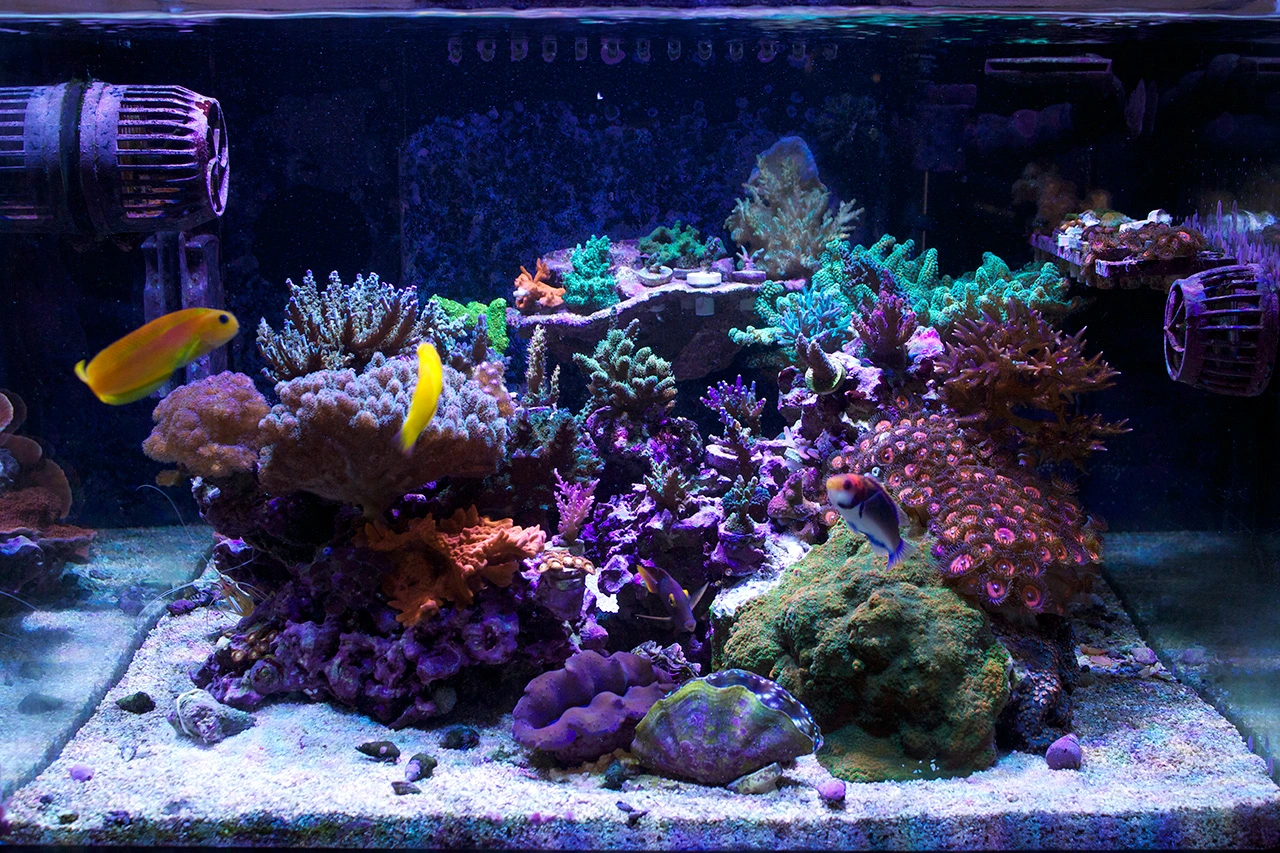Stunning 40-Gallon Reef Tank – Arkayology's TOTM | NanoReef

Tank Specifications
Volume: 40 Gallons / 151 Liters
Dimensions (L × W × H):
24.0" ×
24.0" ×
16.0"
61.0cm ×
61.0cm ×
40.6cm
Equipment List
- Salt: Tropic Marin
Frequently Asked Questions
How often should I perform water changes in a nano reef tank?
In a nano reef tank, like the 40-gallon setup mentioned, it's recommended to perform water changes every 1 to 2 weeks. A common practice is to change about 5 gallons at a time, using filtered ocean saltwater or for convenience, RO/DI water mixed with a quality reef salt such as Tropic Marin Pro Reef.
What is the best feeding regimen for fish and corals in a reef tank?
A good feeding routine for the fish in your reef aquarium is to feed them daily with a varied diet. This can include alternatives such as Rod's Food, NLS pellets, flake food, spirulina loaded brine shrimp, mysis shrimp, bloodworms, and unroasted nori, typically soaked in garlic juice. For corals, you should provide them with specific foods like Reef Nutrition Oyster Feast and Reef Chili, along with other nurturing supplements such as KZ Sponge Power and Coral Vitalizer.
What are the ideal water parameters for an SPS dominant reef tank?
For an SPS dominant reef tank, strive for the following water parameters: salinity around 1.025, temperature between 77.5-78°F, calcium levels at about 420 mg/L, dKH between 7.8 and 8.5, magnesium approximately 1350 mg/L, and nitrates kept below 5 ppm. It's important to monitor these regularly and adjust your dosing accordingly.
How do I maintain calcium and alkalinity in my reef tank?
Maintaining calcium and alkalinity can be managed through regular testing (weekly) and adjusting your dosing accordingly. Use a reliable 2-part dosing system, such as B-Ionic, to keep calcium and dKH levels stable, making sure to adjust your dosages based on your tank’s consumption.
Should I test for phosphates regularly in my reef tank?
The tank owner shared that they no longer test for phosphates, believing that the test kits available may not provide useful accuracy for maintaining SPS corals. Instead, they suggest focusing on maintaining good filtration and ensuring overall proper husbandry for coral health.
What equipment is essential for a healthy reef tank?
Essential equipment for a healthy reef tank includes a reliable protein skimmer (like the Super Reef Octopus INT 1000), high-quality lighting (e.g., EcoTech Radion Gen3), circulation pumps for proper flow (such as EcoTech MP40w or MP10w), a heater (150w Ehiem-Jaeger), and an automatic top-off system (like the Tunze Osmolator 3155) to maintain stable water levels.
How can I optimize coral growth in my reef tank?
To optimize coral growth in your reef tank, ensure that you are providing strong lighting, adequate water flow, effective skimming, and a consistent maintenance routine. Regularly dose essential elements, perform water changes, and allow your corals time to adapt to these conditions.
What resources should I explore as a new reef tank hobbyist?
As a new hobbyist, it's essential to utilize online communities and forums where you can learn from the experiences of others, ask questions, and share your own journey in reef keeping. Engaging in local reef clubs and events can also provide valuable insights and connections.
What is the best advice for new reef tank hobbyists?
Take your time to enjoy the hobby! Go slow, do thorough research, and ask questions whenever needed. Avoid quick fixes or fads, as patience and solid husbandry practices are what truly lead to a successful reef tank.